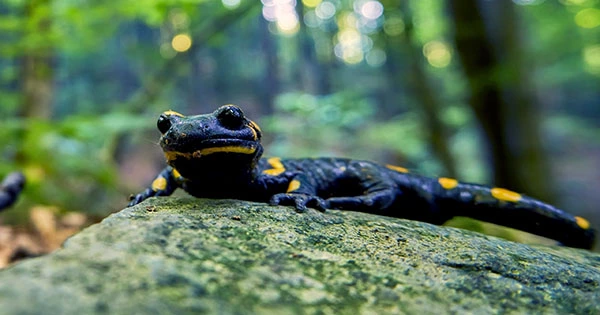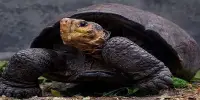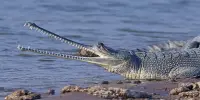Salamanders have a slab-like reputation, which is well-deserved because of absolute units like enormous salamanders and olms that don’t move for seven years. Yet, some of these amphibians are great thrill-seekers. It turns out that wandering salamanders are really adept at skydiving, according to a study in which researchers recorded them doing it, and the results are *chef’s kiss*. Aneides vagrans, or wandering salamanders, are found in the crowns of the world’s tallest trees: redwoods. Despite reaching dizzying heights, they’ve been recorded leaping off branches when disturbed — a habit that wouldn’t be very adaptive unless they’d found a technique of surviving the fall.
The authors of recent research published in Current Biology erected a custom-made vertical wind tunnel to simulate falling from the tree canopy to investigate how they stuck the landing. It’s a more ethical and practical strategy than yeeting amphibians out of trees, plus it allows the researchers to record the skydiving salamanders. Salamanders investigated in the study included both arboreal species like A. vagrants and non-arboreal species to see what (if any) behaviors were connected with tree climbers. The animals were then placed in the wind tunnel to test if they just fell or used any moves to regulate their fall.
In a statement, lead author Christian Brown, a doctorate candidate at the University of South Florida, stated, “Most astonishing to us was the exquisite degree of control that the more arboreal salamanders possessed in the vertical wind tunnel.” “Wandering salamanders were particularly skilled, and they seemed to adopt skydiving stances spontaneously upon initial contact with the airstream.” In the wind tunnel, the arboreal salamanders’ vertical speed dropped by up to 10%, a differential that might represent the difference between life and death while descending from the treetops. These creatures appear to be able to change their speed and direction while falling gracefully by moving their legs and tail.
“Not only were these salamanders able to slow down, but they also employed fine-scale control in pitch, roll, and yaw to maintain erect body postures, make banking turns, and glide horizontally,” Brown explained. “This amount of aerial control was surprising because these salamanders don’t appear to have any obvious aerial control capabilities.” Webbing like that seen in human wingsuits or the skin flaps of sugar gliders, who are so proficient at falling they were named after it, are features you might expect to see in skydiving animals. Because it is feasible to parachute and glide without these characteristics, there is a chance that more skydivers in the animal kingdom will develop unconventional morphologies for “flying.”
“In researching the redwood forest ecology and the distinctive species it has formed over evolutionary time, scientists have barely scratched the surface,” Brown said. “With the climate changing at an unprecedented rate, collecting more data on creatures like roaming salamanders is critical in order to better understand, protect, and maintain this vulnerable environment.”















